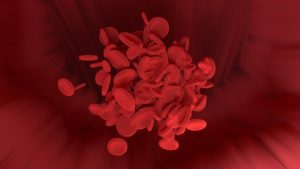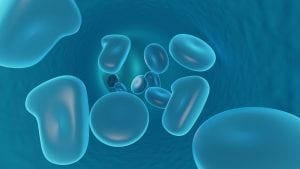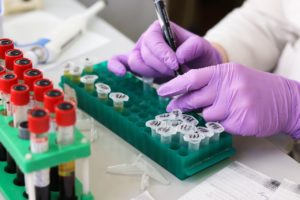Mastocytosis
What is mastocytosis?
Mastocytosis is a chronic condition that results when an unusually large number of mast cells accumulate in the skin, bone marrow, gastrointestinal tract, lymph nodes, liver, and spleen. A mast cell, also called a mastocyte or labrocyte, is a specific type of white blood cell that is part of the immune system, which helps protect the body against pathogens and aids the healing process. There are many different types of mastocytosis.- Cutaneous mastocytosis affects the skin, causing small flat brownish spots that are made more obvious by scratching. For children under the age of three, blistering of these lesions can occur. Cutaneous mastocytosos can evolve into many different subtypes, including maculopapular, dodular, and diffuse cutaneous mastocytosis (DCM), which is the most severe form and usually presents itself during childhood. DCM causes the skin to thicken and become discolored, and other symptoms include blistering, low blood pressure, gastrointestinal bleeding, itchiness, diarrhea, and anaphylactic shock.
- Indolent systemic mastocytosis is generally associated with low mast cell burden, mediator-related symptoms, and skin involvement. People with this form have been known to have an enlarged liver or spleen, and the gastrointestinal tract may also be affected.
- Systemic mastocytosis, most commonly seen in adults, is associated with clonal hematological non-mast cell lineage disease and affects one in three cases of this type of mastocytosis. People generally do not have skin lesions with this form.
- Aggressive systemic mastocytosis manifests as an impaired or loss of liver, bone marrow, and/or bone function due to the overload of mast cells.
- Mast cell leukemia is an aggressive blood cancer that quickly affects the body’s organs. While rare, it is a fatal disease progression.
What are the symptoms of mastocytosis?
The symptoms of mastocytosis can range from mild to life-threatening. Some people experience an enlarged liver or spleen, at which time medical intervention becomes necessary. Depending on the type (listed above), heartburn, stomach aches, abdominal discomfort, and diarrhea may occur, and bones can become soft.What causes mastocytosis?
Genetic mutations resulting in the over-activation of the receptor for mast cells have been identified in almost all adult-onset mastocytosis and approximately 80% of children with skin lesions. However, the mutated gene does not generally pass from generation to generation.How is mastocytosis diagnosed?
There are many tests and imaging studies that can be done to diagnose mastocytosis. A cutaneous mastocytosis diagnosis can be made based on the appearance of the skin, in addition to a skin biopsy revealing high numbers of mast cells. A diagnosis of systemic mastocytosis should be established by a bone marrow biopsy, which would reveal an abnormally high number of mast cells with odd appearance.What treatment options are available for mastocytosis?
At this time, no standard treatment for mastocytosis exists; however, symptoms are treated as they occur. In 2006, the FDA granted expanded approval to treat aggressive systemic mastocytosis with the cancer drug imatinib mesylate, or Gleevec®.Where can I learn more about mastocytosis?
Mastocytosis Articles



Living with Systemic Mastocytosis: How Tracy Dares to be Rare (Pt. 3)
Jessica Lynn
February 28, 2023
Read More »

Living with Systemic Mastocytosis: How Tracy Dares to be Rare (Pt. 2)
Jessica Lynn
February 27, 2023
Read More »

Living with Systemic Mastocytosis: How Tracy Dares to be Rare (Pt. 1)
Jessica Lynn
February 23, 2023
Read More »

Positive Data Reported From Clinical Trial for Advanced Systemic Mastocytosis
Trudy Horsting
June 22, 2022
Read More »

New Report Demonstrates How Dental Complications with Systemic Mastocytosis Should be Managed
Trudy Horsting
May 10, 2022
Read More »





